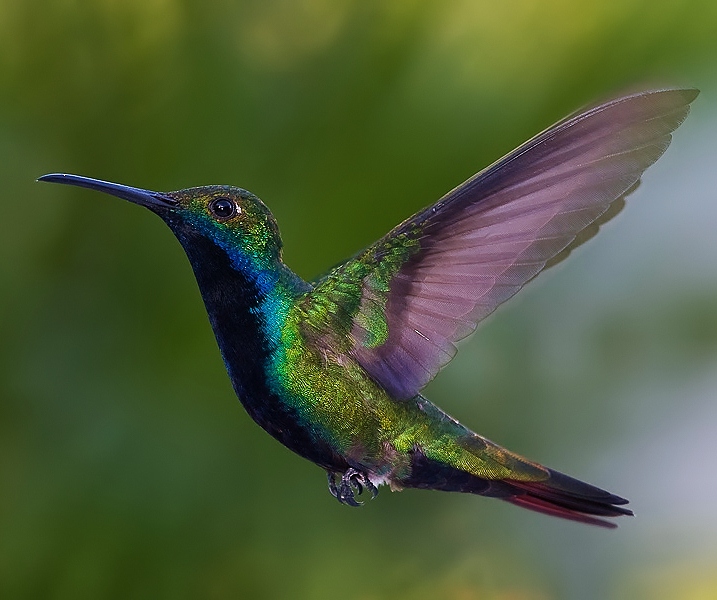 |
| Photo by Fredrik Forsberg (Eldi Foto) |
Common name:
black-throated mango (en); beija-flor-de-veste-preta (pt); mango à cravate noire (fr); mango gorginegro (es); schwarzbrust-mangokolibri (de)
Taxonomy:
Order Apodiformes
Family Trochilidae
Range:
This South American species is found from eastern Panama through Colombia, Venezuela and Brazil, and into Bolivia, Paraguay, Uruguay and north-eastern Argentina. It is mainly found east of the Andes, but also in coastal Ecuador. The black-throated mango is also found in Trinidad and Tobago.
Size:
These birds are 10-11 cm long and weigh 7 g.
Habitat:
The black-throated mango is mostly found in moist scrublands, second growths and cultivated land, but also rainforests and also within urban areas. They are found from sea level up to an altitude of 1.000 m.
Diet:
They feed on nectar and small flying insects.
Breeding:
Black-throated mangos can breed all year round. The nest is a tiny cup made of lichens and plant down, placed on top of a bare horizontal branch 8-15 m above the ground. The female lays 2 white eggs, which she incubates alone for 16-18 days. The chicks fledge 24-25 days after hatching but remain with the mother for another 3-4 weeks. Each female raised 2 broods per year.
Conservation:
IUCN status – LC (Least Concern)
This species has a very large breeding range and is described as fairly common. It is not considered threatened at present.







